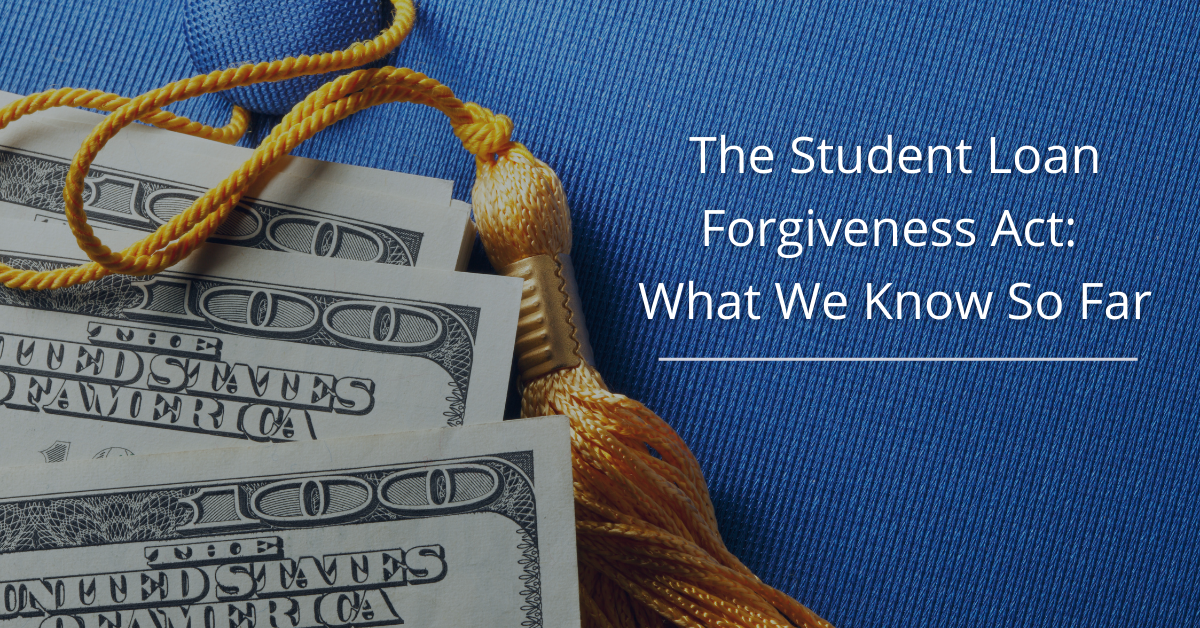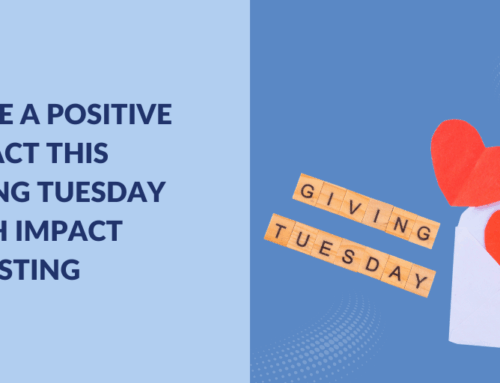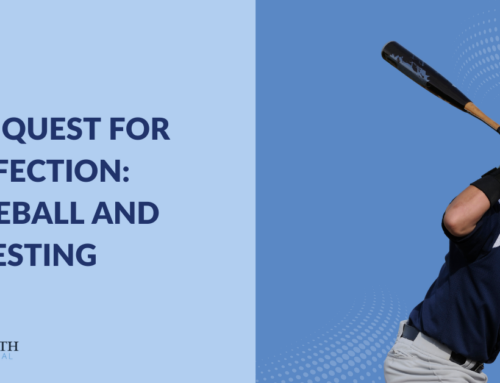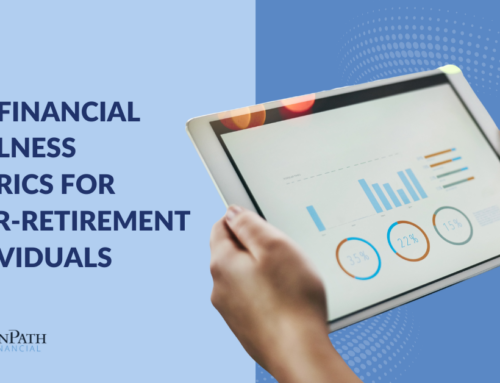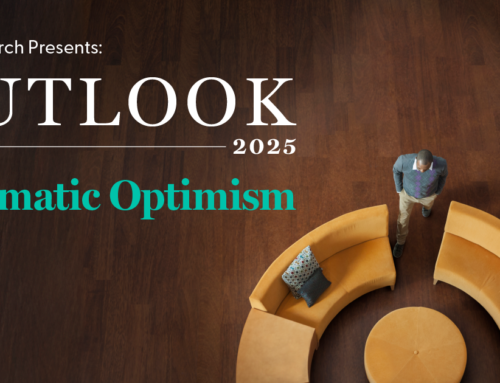On August 24, 2022, just a few days before federal student loan repayment was set to resume, President Biden announced a plan for additional student loan debt relief.
Federal student loan repayment was originally halted in March 2020 at the start of the pandemic. The new plan extends the payment moratorium through the end of the year, offers partial debt cancellation, and includes proposed updates to the Public Service Loan Forgiveness program and a new income-based repayment plan.
What’s New
Here is the new framework for federal student loans.
Loan cancellation. The plan will cancel $10,000 of federal student loan debt for borrowers with an adjusted gross income less than $125,000 ($250,000 for married couples filing jointly). The loan cancellation increases to $20,000 for borrowers who are Pell Grant recipients.1 (A Pell Grant is a federal financial aid grant award to students from low-income households.) Eligibility is based on income from 2020 or 2021, but not 2022.2
The Department of Education estimates that 21% of the borrowers eligible for relief are 25 years and younger, 44% are ages 26 to 39, and the remaining 35% are ages 40 and up, including 5% who are senior citizens. The Department also estimates that approximately 27 million borrowers (more than 60% of the borrower population) are Pell Grant recipients and will be eligible to receive up to $20,000 in debt relief.3
Payment pause extended. The pause on federal student loan repayment is being extended one “final” time through December 31, 2022. President Biden’s announcement states that “borrowers should expect to resume payment in January 2023.”4 In practice, borrowers should expect to hear from their loan servicer at least three weeks before their first payment is due.
Changes to the Public Service Loan Forgiveness (PSLF) program. Borrowers who are employed by a nonprofit organization, the military, or the government may be eligible to have their federal student loans forgiven through the PSLF program due to time-sensitive changes. These temporary changes waive certain eligibility criteria for the program and make it easier for borrowers to receive credit for past periods of repayment that would otherwise not qualify for PSLF. These changes expire on October 31, 2022.
Important note: Borrowers who might qualify for loan forgiveness or credit under the PSLF program due to these time-sensitive changes must apply to the program before October 31, 2022. Borrowers can visit the administration’s PSLF website for more information.
In addition, the Department has proposed allowing certain kinds of deferments and forbearances, such as those for Peace Corps and AmeriCorps service, National Guard duty, and military service, to count toward PSLF.
A new income-based repayment plan. The Department of Education is proposing a new income-driven repayment plan that does the following:
- For undergraduate loans, caps monthly payments at 5% of a borrower’s discretionary income (currently borrowers must pay 10% of their discretionary income)
- For borrowers with original loan balances of $12,000 or less, the loan balance would be forgiven after 10 years of payments (currently borrowers must repay their loans for 20 years)
- Raises the amount of income considered non-discretionary, with the result that a borrower who earns an annual salary based on a $15 minimum wage would not have to make any payments (the monthly payment would be calculated at $0)
- Covers a borrower’s unpaid monthly interest, so that a borrower’s loan balance won’t grow due to interest as long as the borrower is making monthly payments (under current income-driven repayment plans, a borrower’s loan balance can grow even if the borrower continues making monthly payments, because the interest keeps accruing)
- Makes income recertification automatic, which will allow the Department of Education to automatically retrieve a borrower’s income information every year instead of making borrowers recertify their income annually
Will my loans be cancelled automatically?
For most borrowers, no. The Department of Education will be creating a “simple” application for borrowers to claim relief, which will be available by early October. Borrowers who would like to be notified when the application is open can sign up on the Department’s subscription page. Once borrowers complete an application, their loan cancellation should be processed within four to six weeks. The Department recommends that borrowers apply before November 15 in order to receive loan cancellation before the payment pause expires on December 31, 2022. (The Department will still process applications even after the pause expires.)
Some borrowers, however, may be eligible to have their loans cancelled automatically because the Department already has their income data on record.
Are current students eligible for loan cancellation?
Yes, current students are eligible for loan cancellation, provided their loan was obtained before July 1, 2022. However, borrowers who are dependent students need to qualify based on parental income, not their own income.5
Are graduate students eligible for loan cancellation?
Yes, provided income limits are met and it is a federal loan, such as a Direct Loan or Grad PLUS Loan. Private loans are not eligible.
Do parent PLUS Loans qualify for cancellation?
Yes, provided the income limits are met. Any private loans taken out by parents to pay their child’s college education are not eligible.
Will I be taxed on my cancelled debt?
At the federal level, no. At the state level, maybe. Any student loan relief will not be treated as taxable income at the federal level, thanks to provisions in the American Rescue Plan Act of 2021. However, a handful of states that have not yet aligned their laws with this Act could still tax the amount of student debt forgiven unless they act to amend their laws and affirmatively exclude this debt.
I have more than $10,000 in student loan debt. Will my monthly payment be adjusted after cancellation?
It depends. Borrowers who are already in an income-driven repayment plan generally won’t see their monthly payment change because their payment is based on their discretionary income and household size, not their outstanding loan balance. By contrast, borrowers who are in a fixed payment plan should have their monthly payment recalculated by their loan servicer because their outstanding balance will be lower after loan cancellation, which should result in a lower monthly payment.
I made monthly payments during the payment pause. Can I still qualify?
According to the Department of Education, borrowers who continued to make payments on their federal student loans after March 13, 2020 will still qualify for loan cancellation (assuming they meet the income guidelines). Borrowers can request a refund by calling their loan servicer directly. According to Mark Kantrowitz, a financial aid and student loan expert, only 1.2% of borrowers continued to make payments during the payment pause.6
- S. Department of Education, 2022
- The New York Times, August 25, 20223-5) White House Fact Sheet, August 24, 2022
6) The Wall Street Journal, August 25, 2022
Content in this material is for general information only and not intended to provide specific advice or recommendations for any individual. All performance referenced is historical and is no guarantee of future results. All indices are unmanaged and may not be invested into directly.
The information provided is not intended to be a substitute for specific individualized tax planning or legal advice. We suggest that you consult with a qualified tax or legal professional.
LPL Financial Representatives offer access to Trust Services through The Private Trust Company N.A., an affiliate of LPL Financial.
This article was prepared by Broadridge.
LPL Tracking #1-05321500

